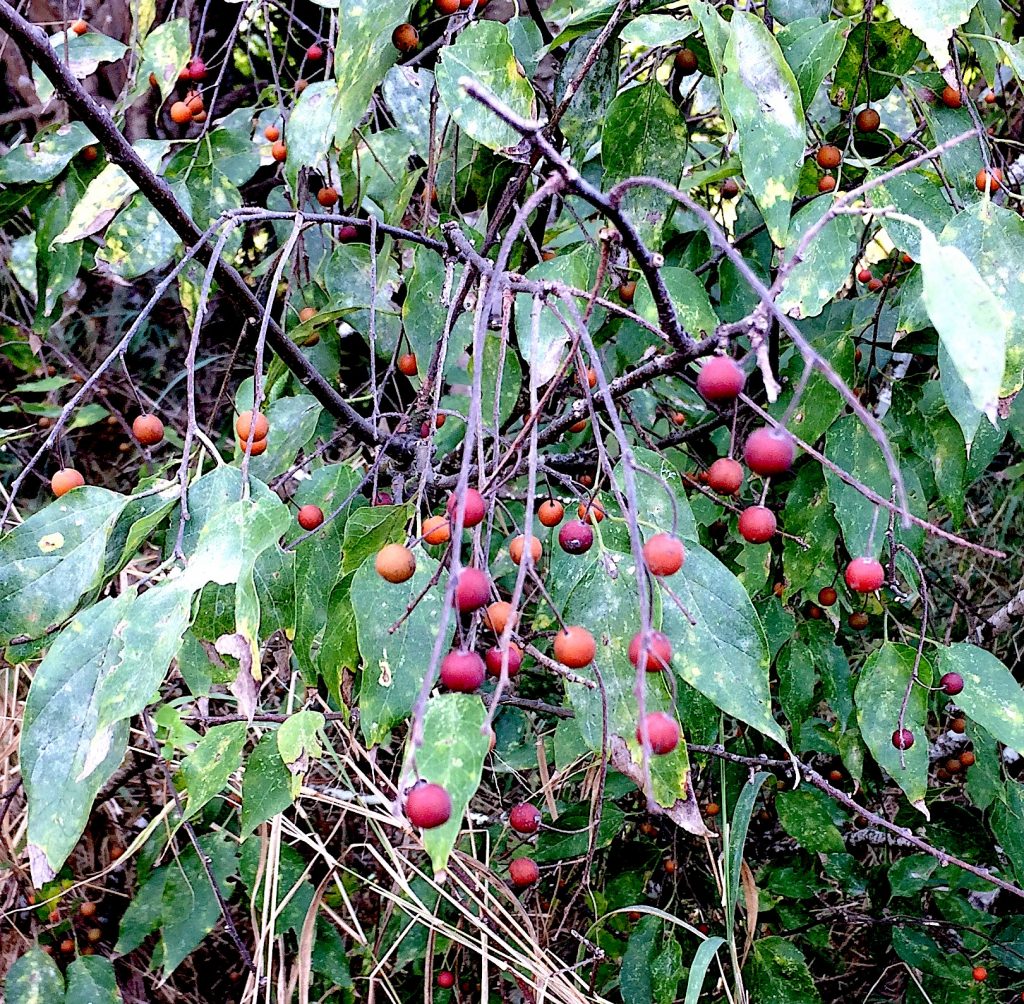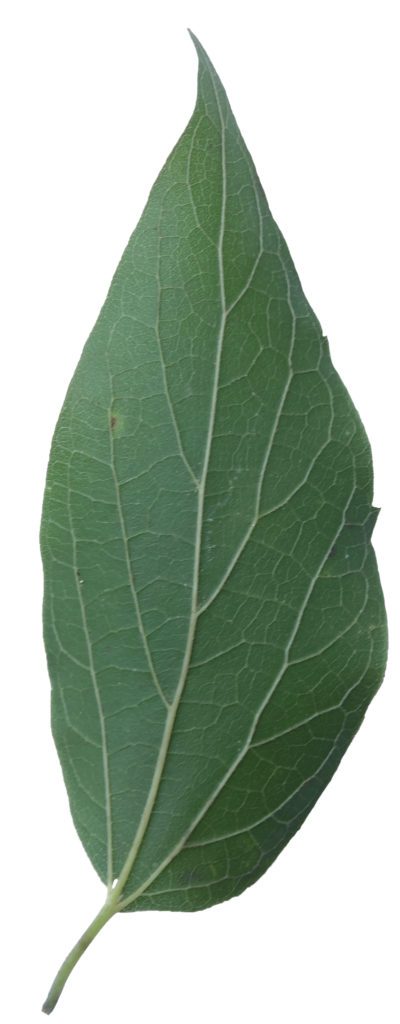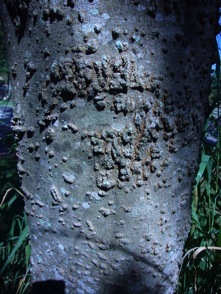
Sugarberries are Hackberries with a Southern Accent
Sugarberries like to be near water and that’s why it caught my eye as I coasted by on a bike trail: It was growing on top of a dry hill.
Part of my approach to plants is to answer the questions raised by I.T.E.M., Identification, Time of year, Environment, and Method of Preparation. If you can’t satisfactorily answer them all then you might have the wrong plant. This surgarberry was environmentally out of place. I had seen such a thing once before with a sugarberry and you have to figure out why. It is simply good form to do so, and safe foraging.
Sugarberries — Celtis laevigata (SELL-tiss lee-vih-GAY-tuh )– like moisture. You’ll often find a stand of them near rivers. The last time I found a stand out of place they were growing near an irrigation canal. This time there was no canal. The Sugarberry was struggling with two Black Cherries for one spot, and winning. There was a swale nearby but on the top of the hill it was more for aesthetic reasons than practical. Then I saw the lawn irrigation head nearby. The tree was near a large, long-term business and daily watering was enough to make it think it was living in a wetter spot. Probably a bird dropped a seed while visiting a young cherry and the rest is botanical history.
Sugarberries, also called hackberries, were prized among people everywhere, New World and Old. They are big trees that can grow to 100 feet. The berries are small, sparse, and usually way out of reach. They have been praised since ancient times. Homer, the 900 BCE blind poet of ancient stories that shaped the Greek culture, spoke of them. He said one taste of the hackberry in a foreign land was enough to make a man never want go home again. Honestly, that’s an exaggeration. They are sweet and tasty but a huge amount of work would be involved to get even a cup of them. Perhaps natives everywhere trimmed the tree short and husbanded it.

The berry is just about the same size as chokecherry but the stone is larger. Inside the stone is a kernel. The pulp around the stone is about 10 times thicker than the pulp on a cabbage palm berry which is paint thin, so think ten layers of paint… read not a lot. This is a trail side nibble when in reach. However, the Native Americans had a different idea. Some would grind up the entire berry, stone, kernel and all, and make a paste out of it, either to bake in a fire or to add with fat and parched corn to make a gruel. Others removed the pulp, eating that separately. Then they lightly dried the kernel and cracked it. The inner kernel was considered a delicacy and the outer shell was ground up and used as a spice, usually on meat. The stone can be eaten raw and they also store well in oil. When ground into a powder they can be added to flour to make bread. The entire berry is high in calcium, can be up to 20% protein, and has a good amount of phosphorus as well. It also has a high amount of fat and fiber.
How the tree got its name is a bit of a story. Only in the South are they called Sugarberries. Elsewhere they are Hackberries. That word came via Scottish from the names of some northern Scandinavia cherry trees that mean hag, or old woman. How the name of cherry trees got to be associated with the Celtis is anyone guess, though the fruit do resemble choke cherries and the tree is considered by some to be a ‘witch” tree. My guess is because the bark of the species is usually warty in patches it might have reminded folk of an old face . That warty bark is one of its identifying characteristics (and in the southwest of North America some hackberries also have thorns.) Don’t confuse the Sugarberry with the Toothache Tree which has very aromatic, medicine-smelling leaves and thorns. The Sugarberry does not.
Celtis is the ancient Greek name for a lotus with sweet berries, and was used by Pliny. Laevigata means smooth, and most of the sugarberry’s bark is smooth but there are always tell-tale corky warts, usually without thorns. It is interesting that English speakers would refer to the tree as the Sugarberry and the Greeks, a world and language away, call their tree, the C. australis, the Honeyberry. Clearly the dry sweetness impresses people.
While the C. laevigata is the common species in the lower half of the United States, there are several species, many of them edible, and found throughout North American and the world. Check out the species nearest you. Most hackberries like highlands, the sugarberry the low lands. Oh, It is a common host for mistletoe, is a good candidate for bonsai, and like the black walnut its leaf litter discourages growth of other plants.
And at Emerson Point Preserve, Palmetto, Fl., there is a “sugarberry” with teeth on the leaves. Current guess is that it is a “Japanese Sugarberry.”
Green Deane’s “Itemized” Plant Profile
IDENTIFICATION: Leaves alternate along the stem, medium to dark green, 2 to 4″ twice as long as wide, oval, serrated only on upper half of leaf, asymmetrical (lop-sided) three prominent veins, leaf spots and galls common, wigs zig-zaggy. Leaves turn yellow in the fall. Flowers greenish-yellow in spring. Fruit a green berry turning to orange, red or dark purple. Branches droop. Gray bark has patches of corky warts.
TIME OF YEAR: Fruits late summer, fall
ENVIRONMENT: Likes full sun and prefers moist rich soil.
METHOD OF PREPARATION: Ripe fruit pulp raw or cooked. Stone and inner kernel raw or cooked, stone shell ground up as seasoning, kernel roasted as a delicacy, entire berry pulp and seed crushed and cooked. Dried berries ground into a powder for adding to flour.


